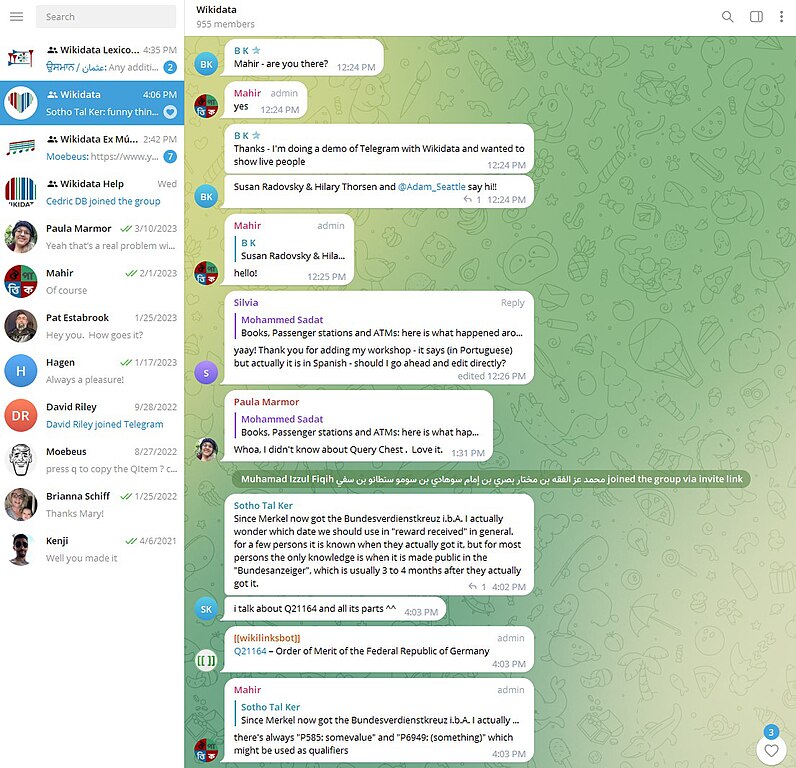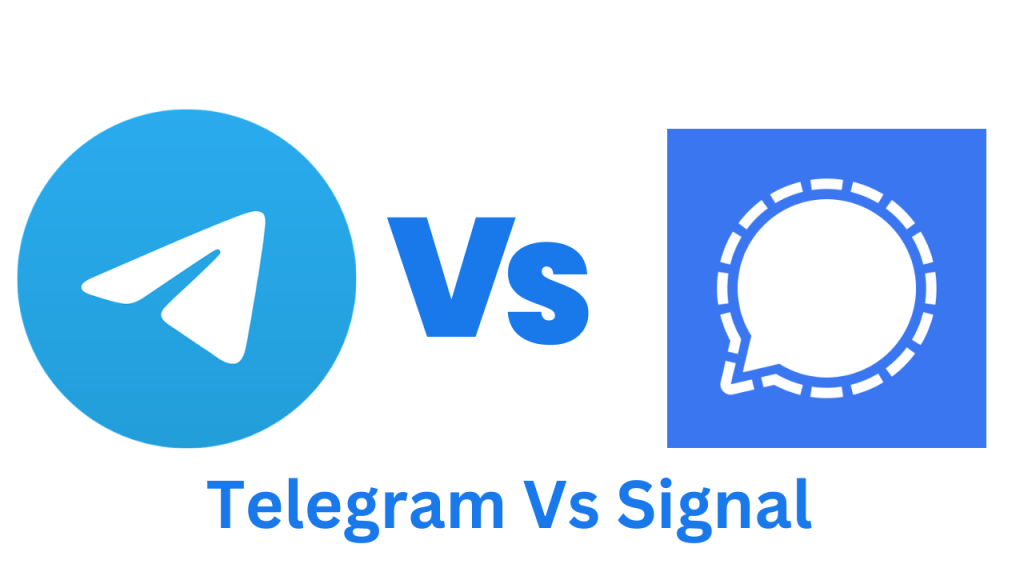Telegram, a popular messaging app, offers two main communication channels: Channels and Groups. Understanding the key differences between these two features is crucial for effective communication and engagement within the platform.
Channels are broadcast tools designed for one-way communication. They allow creators to share content with a large audience without the need for individual replies. Think of channels as a way to disseminate information, news, or updates to a broad group of subscribers. Channels can have an unlimited number of members, making them ideal for reaching a large audience.
Groups are designed for two-way communication. They function more like traditional chat groups, where members can actively participate in discussions, share messages, and respond to each other. Groups are well-suited for smaller communities and collaborative projects where interaction and feedback are essential.
As of 2023, Telegram boasts an impressive user base of over 700 million active users worldwide. Channels have played a significant role in the platform’s popularity, with millions of channels catering to diverse interests and topics. From news outlets to hobbyist communities, channels offer a vast array of content to explore.
Let’s find the difference between Telegram Channels and Groups

| Features | Channels | Groups |
| Engagement Dynamics | One-way (broadcast) | Two-way (interactive) |
| Membership | Unlimited | 200,000 |
| Privacy | Public | Public or private |
| Purpose | Broadcasting | Collaboration, community |
| Admin Controls | Extensive | Extensive |
| Places | Available | Not available |
| Notifications | Automatic | Customizable |
| Chat History | Public | Private |
Telegram, a popular messaging app, offers two distinct communication channels: Channels and Groups. While they might seem similar at first glance, they cater to different purposes and have varying functionalities. Let’s explore the main difference between Telegram Channels and Groups.
1. Engagement Dynamics
Channels: Channels are designed for one-way communication, where an admin or a group of admins broadcast messages to a large audience. Subscribers can only read the messages and react to them but cannot send messages directly. This makes Channels ideal for disseminating information, news updates, or content to a wide reach without overwhelming the admin with individual messages.
Groups: Groups foster two-way communication, allowing all members to participate actively by sending messages, sharing media, and engaging in discussions. This interactive nature makes Groups suitable for collaborative projects, team discussions, or building a strong community.
2. Membership and Privacy
Channels: Channels can have an unlimited number of subscribers, making them perfect for reaching a vast audience. Privacy settings in Channels are limited, and all subscribers can see the channel’s posts and members list. Admins have the ability to manage membership by controlling who can join the channel and removing members when needed.
Groups: Groups have a membership limit of 200,000 members, which is suitable for smaller communities or specific projects. Privacy settings in Groups offer more flexibility. Admins can create private groups where only invited members can join, or public groups that anyone can discover and join. Additionally, admins can restrict member visibility to keep the group more private.
3. Purpose and Broadcasting
Channels: Channels are primarily used for broadcasting content to a large audience. They are well-suited for news outlets, influencers, businesses, or organizations that want to share information with their followers. Channels are also ideal for live streaming events or broadcasting audio or video content.
Groups: Groups are versatile and can be used for various purposes. They are commonly used for team collaborations, project discussions, social gatherings, or building online communities. Groups are also suitable for sharing files, organizing events, or having private conversations within a smaller group.
4. Admin Controls and Places
Channels: Admins in Channels have extensive control over the channel’s content and membership. They can create polls, pin messages, delete messages, manage members, and restrict certain actions. Channels also have a dedicated “Places” feature where admins can share location-based information with subscribers, such as nearby events, businesses, or points of interest.
Groups: Admins in Groups have similar control over the group’s content and membership as Channels. However, Groups do not have a dedicated “Places” feature.
5. Notifications and Communication Visibility
Channels: In Channels, subscribers are notified of new posts but do not have the option to control the frequency of these notifications. Channels also have a public chat history, which means that anyone can view the channel’s posts, even if they are not a subscriber.
Groups: Members of Groups can customize their notification settings to receive notifications only for important messages or when they are mentioned. Groups also have a private chat history, which means that only members can view the group’s messages.
What is Telegram Group?

A Telegram group is a digital space where people can communicate and share content. It’s like a virtual chat room on the Telegram messaging app.
Key features of Telegram groups include:
- Large capacity: Groups can accommodate up to 200,000 members.
- Group admins: Admins have the power to manage the group, such as adding or removing members, pinning messages, and controlling who can post.
- File sharing: Members can share files of various types, including documents, images, videos, and more.
- Bots: Bots can be added to groups to perform specific tasks, such as providing information, playing games, or moderating discussions.
- Privacy settings: Groups can be public or private. Public groups can be found by anyone, while private groups require an invitation to join.
Telegram groups are often used for:
- Socializing: Connecting with friends and family.
- Communities: Building communities around shared interests or hobbies.
- Work: Collaborating on projects and sharing information.
- Events: Organizing and promoting events.
What is Telegram Channel?

Telegram Channels are a fantastic tool for broadcasting public messages to a large audience. Think of them as one-way streets: the channel owner or admins post content, while subscribers can only read, react, and comment (if enabled).
Key Features:
- Unlimited Subscribers: Channels can have an infinite number of followers.
- Anonymous Posting: Posts are attributed to the channel, not the individual poster.
- Detailed Statistics: Channel admins can track view counts, user growth, and engagement.
- Rich Media: Share text, photos, videos, documents, and more.
- Notifications: Subscribers receive notifications for new posts.
Use Cases:
- News and Updates: Keep your audience informed about breaking news, events, or product releases.
- Community Building: Foster a sense of belonging and connection among like-minded individuals.
- Education and Learning: Share educational content, tutorials, or resources.
- Marketing and Promotions: Market your products or services on Telegram to reach a wider audience.
- Entertainment: Share memes, jokes, or other forms of entertainment.
Want to find a channel?
- Search: Use Telegram’s search bar to find channels by topic or keyword.
- Explore: Browse popular channels or explore categories like news, sports, or entertainment.
- Recommendations: Ask friends or colleagues for their favorite channels.
Ready to create your Own channel?
- Open Telegram: Launch the application on your device.
- Start a New Message: Tap the “New Message” icon.
- Select “New Channel”: Choose this option from the menu.
- Customize Your Channel: Enter a name and description, and choose the privacy settings (public or private).
Remember: Channels are a powerful tool, but it’s essential to use them responsibly and ethically. Avoid spamming, spreading misinformation, or violating community guidelines.
Get the Best Telegram Marketing Services With our Telegram Ad Agency
Types of Telegram channels – Public & Private
Telegram channels are a powerful tool for communication and information sharing. They can be either public or private, each with its own advantages and disadvantages.
Public Channels
- Visibility: Accessible to anyone with the channel link.
- Audience: Ideal for reaching a large, diverse audience.
- Content: Suitable for sharing general information, news, updates, and resources.
- Management: Easier to manage as there’s no need for approval or invitation.
Private Channels
- Visibility: Accessible only to members who have been invited or joined through a specific link.
- Audience: Ideal for creating a more exclusive and controlled community.
- Content: Suitable for sharing sensitive or confidential information, discussing private matters, or building a strong sense of belonging.
- Management: Requires m
| Feature | Public Channels | Private Channels |
| Visibility | Accessible to anyone | Accessible only to invited members |
| Audience | Large, diverse | Smaller, more exclusive |
| Content | General information, news, updates | Sensitive, confidential information |
| Management | Easier | More difficult |
Telegram Channel vs Group – Which is Best?
When deciding between a Telegram Channel and a Group, understanding the key differences and their specific use cases can help you choose the best option for your needs. Here’s a comparison to help you make your decision:
Telegram Channel
- Purpose: A Telegram Channel is designed for broadcasting messages to a large audience. It’s ideal for sharing information, updates, or content with many subscribers.
- Audience Interaction: Channels are typically one-way communication platforms where only admins can post messages. Subscribers can view and share the content but cannot reply or comment directly in the channel.
- Visibility: Channels can have an unlimited number of subscribers. Each post in a channel shows the total number of views, making it easy to gauge engagement.
- Content Control: Admins have full control over the content shared, ensuring a consistent and focused message.
- Use Cases: Channels are perfect for businesses, influencers, news outlets, or anyone looking to broadcast updates, news, promotional content, or educational material.
Telegram Group
- Purpose: A Telegram Group is intended for community interaction and discussion. It’s a space where members can communicate, share ideas, and engage in conversations.
- Audience Interaction: Groups allow all members to post messages, creating a more collaborative and interactive environment. Admins can control who joins and what members can do within the group.
- Visibility: Groups can host up to 200,000 members. Group messages are visible to all members, making group chats highly interactive.
- Content Control: While admins have control over group settings and can moderate content, the nature of a group is more dynamic and less controlled than a channel.
- Use Cases: Groups are ideal for communities, teams, clubs, or any organization that values interaction, collaboration, and member engagement.
Which is Best?
- Opt for a Telegram Channel if your main objective is to broadcast information to a large audience with minimal interaction. It’s best for announcements, marketing, or educational content where you want to maintain control over the message.
- Choose a Telegram Group if you want to create a community where members can interact with each other, share ideas, and participate in discussions. It’s ideal for fostering engagement, collaboration, and a sense of community.
In summary, the choice between a Telegram Channel and a Group depends on whether you prioritize one-way communication or interactive discussion.
Final Words
In conclusion, both Telegram Channels and Groups serve distinct purposes and offer unique benefits depending on your communication needs. Channels are ideal for broadcasting messages to a large audience, providing a one-way communication platform that ensures information is delivered efficiently and consistently. On the other hand, Groups foster interactive discussions and collaborative exchanges, making them perfect for community building and engagement.
When deciding between the two, consider your primary goal: if it’s to disseminate information to a wide audience without the need for feedback, Channels are the way to go. However, if you aim to create a space for dialogue and community interaction, Groups will better suit your needs. Ultimately, understanding the differences between Telegram Channels and Groups will help you leverage these tools effectively to achieve your communication objectives.
FAQs
Telegram Channels are platforms where admins can broadcast messages to a large audience, with only admins able to post.
You can identify your Telegram channel or group by the icon next to its name—channels have a megaphone, and groups have a people icon.
Telegram doesn’t allow direct conversion from a group to a channel; you’ll need to create a new channel and invite the group members manually.
Only members or those with an invite link can see private groups, while public groups are visible to anyone on Telegram.


